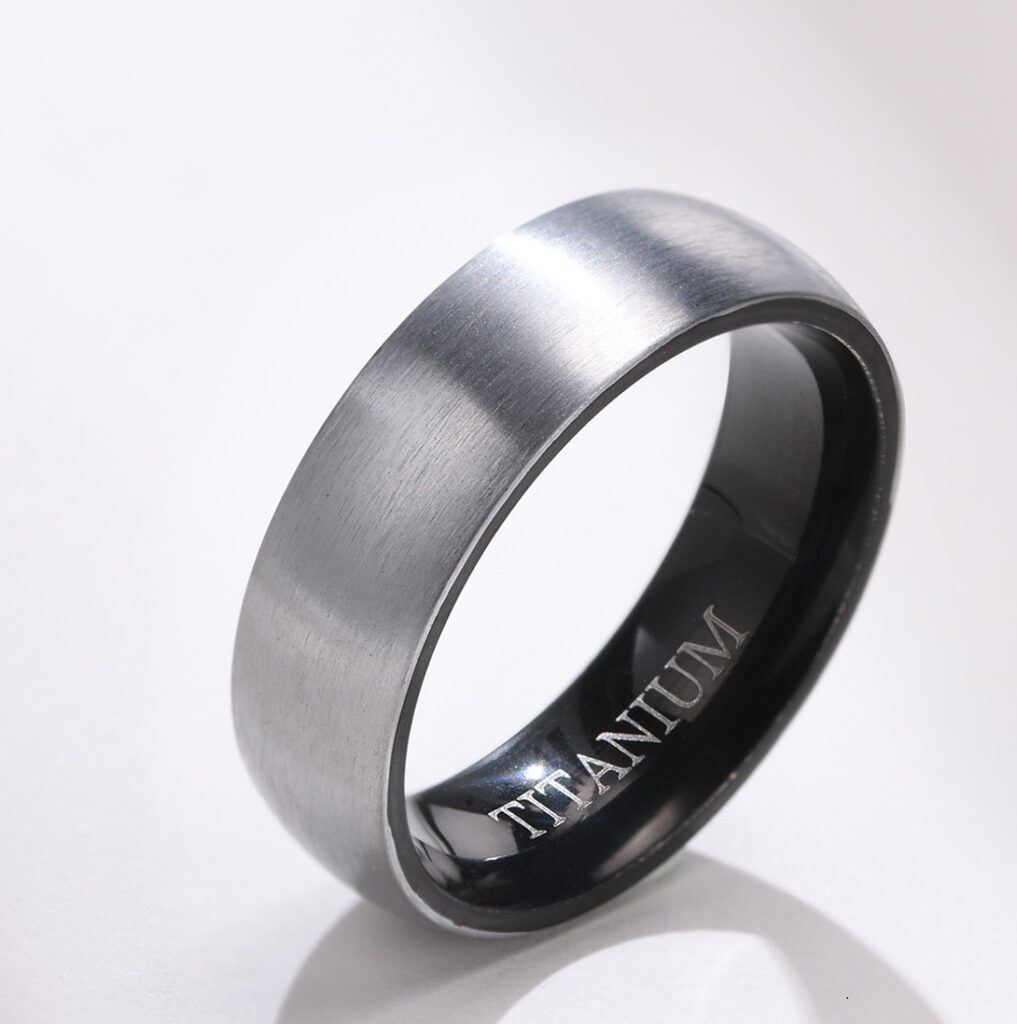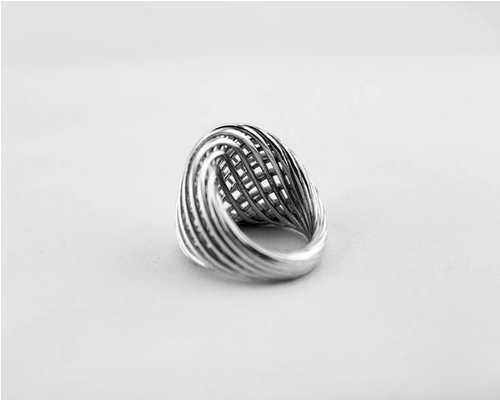Finding the Perfect Ring: The Dilemma of Choice
Imagine standing in a jewelry store, mesmerized by the array of shiny, exquisite rings. Each ring promises to be a symbol of style, strength, and durability. But as you reach for a decision, a dilemma arises: should you choose stainless steel or titanium? Both metals offer unique benefits, yet understanding their differences is crucial to making the right choice. Let’s delve into the world of stainless steel and titanium rings to help you find the perfect match for your needs.

Stainless Steel vs. Titanium: Key Differences
When comparing stainless steel and titanium rings, several key differences come to light:
Strength and Durability
Titanium is approximately twice as strong as stainless steel, making it more durable and longer-lasting. However, titanium can scratch and become dull if not polished regularly. On the other hand, stainless steel is almost scratch-resistant and maintains its shine with occasional polishing.
Weight
Titanium is significantly lighter than stainless steel, being about 45% lighter. This makes titanium rings more comfortable for those not used to wearing jewelry.
Corrosion Resistance
Both metals are corrosion-resistant, but titanium has a slight edge. Titanium forms a protective oxide layer when exposed to air, preventing further oxidation. Stainless steel can rust when exposed to moisture, while titanium does not.
Color and Appearance
Stainless steel typically has a brighter, lighter gray color with a shinier finish. Titanium has a slightly darker, smokier gray appearance with a more muted finish.
Hypoallergenic Properties
Both metals are generally hypoallergenic, but titanium is completely nickel-free, making it the better choice for those with severe metal sensitivities.
Cost
Stainless steel is generally less expensive than titanium due to its wider availability and easier manufacturing process.
Comparison table between stainless steel and titanium:
| Characteristic | Stainless Steel | Titanium |
|---|---|---|
| Strength and Durability | High strength, wear-resistant | Approximately twice as strong as stainless steel, more durable |
| Weight | Heavier | About 45% lighter, more lightweight |
| Corrosion Resistance | Corrosion-resistant but may rust in humid environments | More corrosion-resistant, forms a protective oxide layer when exposed to air |
| Color and Appearance | Brighter, lighter gray with a shiny finish | Slightly darker, smoky gray with a more matte finish |
| Hypoallergenic Properties | Generally hypoallergenic, contains nickel | Completely nickel-free, suitable for those with metal sensitivities |
| Cost | Less expensive, easier manufacturing process | More expensive, more complex manufacturing process |
| Customization | Can be polished but not anodized for color | Can be anodized to create various colors |
Customization
Titanium can be anodized to create various colors, offering more design options.
In conclusion, both metals have their advantages. Titanium is stronger, lighter, and more corrosion-resistant, making it ideal for those prioritizing durability and comfort. Stainless steel is more affordable, maintains its shine better, and is suitable for most people without metal sensitivities. The choice ultimately depends on personal preferences, lifestyle, and budget.
Connecting the Dots: Why Your Choice Matters
Now that we’ve examined the key differences, you might wonder which metal is more resistant to scratches. While titanium is incredibly strong, stainless steel is more scratch-resistant. This means your stainless steel ring will maintain its shine with minimal maintenance, whereas titanium rings might require regular polishing to stay looking their best.
When it comes to cost, stainless steel rings are generally more affordable than titanium rings. This affordability makes stainless steel an excellent option for those on a budget without compromising on durability and style. However, titanium rings, with their lightweight and hypoallergenic properties, offer a unique combination of comfort and safety for those with metal sensitivities.
In terms of comfort, titanium’s lightweight nature makes it a more comfortable choice for daily wear. The significant weight difference means you might hardly notice you’re wearing a titanium ring, making it ideal for those not used to jewelry.
To maintain their appearance, titanium rings should be polished regularly to prevent them from becoming dull. Stainless steel rings, however, require only occasional polishing, making them a more low-maintenance option.
The Future of Rings: 3D Printing Possibilities

The rise of 3D printing has revolutionized the jewelry industry, including ring production. Yes, it is possible to 3D print rings, offering several advantages:
Design Freedom
3D printing allows for complex and intricate designs that would be difficult or impossible to create using traditional methods. Designers can create unique shapes and structures with high precision.
Customization
Rings can be easily customized to fit individual preferences, including size adjustments and personalized designs.
Prototyping
Jewelry designers can quickly create prototypes to visualize and test designs before final production.
Material Options
Various materials can be used for 3D printed rings, including metals (through processes like lost wax casting), resins, and plastics. Common materials include silver, gold, and platinum.
Cost-Effective Production
For small batches or custom pieces, 3D printing can be more cost-effective than traditional manufacturing methods.
Quick Turnaround
3D printing allows for faster production times compared to traditional jewelry-making techniques.
High Quality
Modern 3D printers can produce high-quality, detailed rings with smooth finishes.
When 3D printing rings, it’s important to consider factors such as wall thickness, feature size, and material properties to ensure the ring is durable and wearable. Some 3D printing technologies, like SLA (Stereolithography) or DLP (Digital Light Processing), are particularly well-suited for creating detailed jewelry pieces. However, post-processing steps, such as polishing or casting, may be required depending on the desired final product and material used.
In conclusion, whether you choose stainless steel or titanium, understanding the unique qualities and maintenance needs of each metal can help you make an informed decision. And with the advancements in 3D printing, the possibilities for creating your perfect ring are endless.

